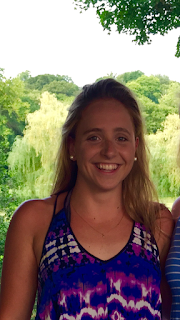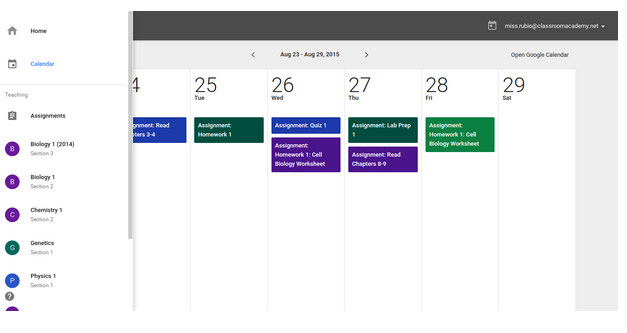Editor's note: We're celebrating this year's impressive 20 Google Science Fair finalist projects over 20 days in our Spotlight on a Young Scientist series. Learn more about each of these inspiring young people and hear what inspires them in their own words.
Name: Calvin Rieder
Home: Ontario, Canada
Age Category: 16-18
Project title: Extracting clean water from air: solar-powered solution for providing potable water
Calvin once saw a camping trick that transformed air into water. The power of that simple trick stuck with him, and then he realized it just might save lives. He decided to use that model to help provide safe drinking water to the billions around the world with limited access to clean water. Without a lab, Calvin built a model at home (powered by the sun) to extract water from the air without external energy or mechanical assistance. Calvin was extremely excited to see that his condensation model produced water for 12.5 hours per night. He looks forward to the impact his model could make for those in need of our most necessary natural resource.
What was the inspiration behind your project?
When deciding on my first science fair project, my main focus was to address a significant global challenge. I chose the global water crisis as my subject after learning that over 1 billion people lack access to sufficient clean water. I was also shocked that a child dies every minute from a water-related disease and that in some areas of the world women spend up to twelve hours a day walking to obtain water. I decided to try to create devices that could produce potable water from the atmosphere at low cost to improve water access for some of these people. Around that time, an earthquake struck Haiti, and I remember thinking that the devices I was developing, which did not require infrastructure, could also be useful in this type of disaster situation. In the majority of water shortages, those most affected are those who are impoverished and cannot afford water production systems with running costs. In addition, frequently these people live in areas without infrastructure. I also decided that any system I would create would have to have no negative impact on the environment, as I didn’t want to create new problems while solving an old one. For these reasons, I decided that the devices had to operate without an electrical power source or infrastructure. Finally, while my devices were attempting to address the problem of water scarcity, millions only have access to contaminated water, and 2.5 billion people live in areas with inadequate sanitation. I also wanted to address this huge problem, again without electrical assistance or a requirement for infrastructure. For this reason, I developed an efficient, new solar still which uses solar energy to convert contaminated water into potable water.
When and why did you become interested in science?
I have always been interested in how things work, in constructing new things. From a young age, I loved kids’ science shows. When I was 6 years old, I became fascinated with marine biology, starting with sharks, and I’m still very passionate about this subject. In Grade 7, our school held a science fair that I found success in, and this experience motivated me to continually improve my work and participate in several successive science fairs. My interest and passion for science continues to increase with each fair that I participate in. I consider these amazing opportunities to learn and explore.
What words of advice would you share with other young scientists?
Work hard and persist, because when researching, things rarely happen overnight. So you get what you put into it. Also, don’t be afraid to think big and take on problems that seem beyond your ability to solve, because often small ideas can lead to significant new solutions. Finally, never become disheartened by failure or problems that arise in your work, as it’s all part of the process.
Name: Calvin Rieder
Home: Ontario, Canada
Age Category: 16-18
Project title: Extracting clean water from air: solar-powered solution for providing potable water
Calvin once saw a camping trick that transformed air into water. The power of that simple trick stuck with him, and then he realized it just might save lives. He decided to use that model to help provide safe drinking water to the billions around the world with limited access to clean water. Without a lab, Calvin built a model at home (powered by the sun) to extract water from the air without external energy or mechanical assistance. Calvin was extremely excited to see that his condensation model produced water for 12.5 hours per night. He looks forward to the impact his model could make for those in need of our most necessary natural resource.
What was the inspiration behind your project?
When deciding on my first science fair project, my main focus was to address a significant global challenge. I chose the global water crisis as my subject after learning that over 1 billion people lack access to sufficient clean water. I was also shocked that a child dies every minute from a water-related disease and that in some areas of the world women spend up to twelve hours a day walking to obtain water. I decided to try to create devices that could produce potable water from the atmosphere at low cost to improve water access for some of these people. Around that time, an earthquake struck Haiti, and I remember thinking that the devices I was developing, which did not require infrastructure, could also be useful in this type of disaster situation. In the majority of water shortages, those most affected are those who are impoverished and cannot afford water production systems with running costs. In addition, frequently these people live in areas without infrastructure. I also decided that any system I would create would have to have no negative impact on the environment, as I didn’t want to create new problems while solving an old one. For these reasons, I decided that the devices had to operate without an electrical power source or infrastructure. Finally, while my devices were attempting to address the problem of water scarcity, millions only have access to contaminated water, and 2.5 billion people live in areas with inadequate sanitation. I also wanted to address this huge problem, again without electrical assistance or a requirement for infrastructure. For this reason, I developed an efficient, new solar still which uses solar energy to convert contaminated water into potable water.
When and why did you become interested in science?
I have always been interested in how things work, in constructing new things. From a young age, I loved kids’ science shows. When I was 6 years old, I became fascinated with marine biology, starting with sharks, and I’m still very passionate about this subject. In Grade 7, our school held a science fair that I found success in, and this experience motivated me to continually improve my work and participate in several successive science fairs. My interest and passion for science continues to increase with each fair that I participate in. I consider these amazing opportunities to learn and explore.
What words of advice would you share with other young scientists?
Work hard and persist, because when researching, things rarely happen overnight. So you get what you put into it. Also, don’t be afraid to think big and take on problems that seem beyond your ability to solve, because often small ideas can lead to significant new solutions. Finally, never become disheartened by failure or problems that arise in your work, as it’s all part of the process.








